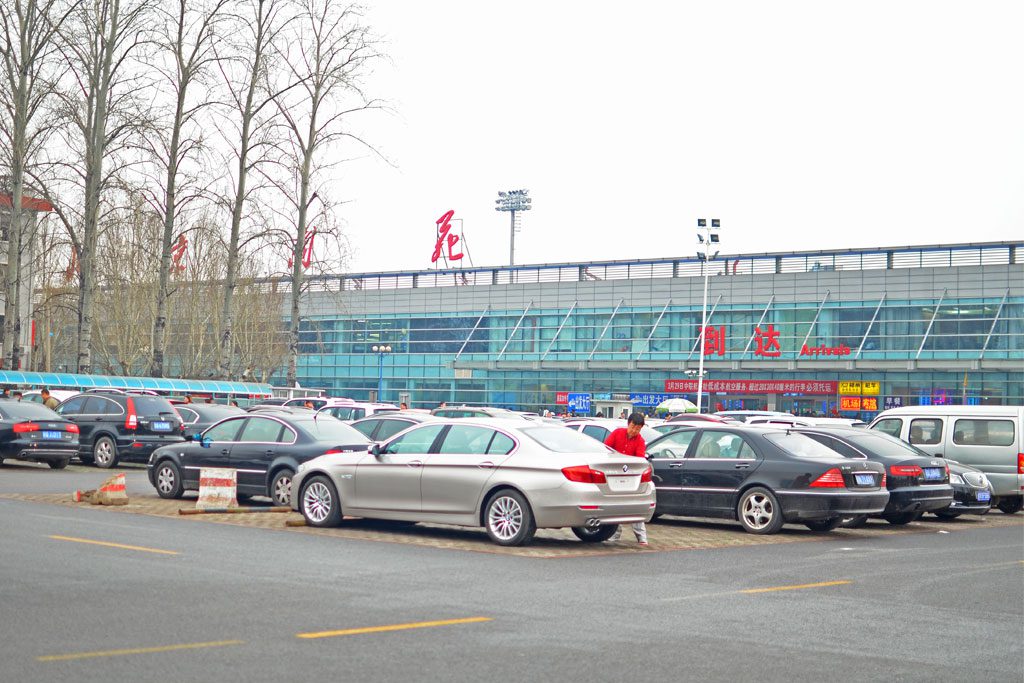A Guide To Beijing Daxing International Airport
The next time you take an international flight into Beijing, you might not be flying into the Capital International Airport that so many of us have come to know over the years. With construction on the $10 million Beijing Daxing International Airport (PKX) almost wrapped up, the airport is scheduled to take in its first passengers this fall with the world’s largest single building terminal. Daxing will be replacing the Beijing Nanyuan Airport, the oldest airport in China, which has been taking in flights for over a hundred years since opening in 1910.
 Beijing Nanyuan Airport
Beijing Nanyuan AirportWith an area of over 11 000 000 square feet, Daxing, and its awe-inspiring six-legged design courtesy of the late Iraqi-British architect, Zaha Hadrid, is expected to eventually have nearly 900 000 flights and serve 100 million passengers every year. Currently, there is seven runways and a second terminal is expected to be added soon. Successfully implementing an airport of this scale clearly took meticulous planning, and China, like always, is building towards the future with high ambitions. With Capitol already operating as the second busiest airport in the world, it makes sense that construction on a second mega-airport started to share the load.
 Beijing Daxing Airport interior
Beijing Daxing Airport interiorConveniently, the new airport will be a well-oiled machine and ready to impress on the international stage by the time the 2022 Winter Olympics roll into Beijing. Better yet, China’s continued research into green energy means Daxing will be partly powered by a nearby solar farm and will recyle rain water. The location of the airport also suggests that China remains confident that the rapid economic growth witnessed in Shenzhen over the last few decades can be repeated in Xiong’an.
The Xiong’an New Area, established in 2017, will serve as a center for infrastructure and transportation in the Beijing-Tianjin-Hebei area (often abbreviated as Jing-Jin-Ji). The Daxing airport, while still within the capitol’s city limits, is located along the Beijing-Hebei border, and almost exactly in the middle of Beijing and Xiong’an. While the capitol airport, northeast of Beijing, would be too far away to serve Xiong’an, Daxing will prove essential to the region’s development if history is going to repeat itself, and if Hebei can develop China’s next big megacity.
 Check-in desk
Check-in deskA major intercity rail between Xiong’an and Beijing will also have a stop at the new airport. Starting at Beijing West railway station, the rail will take passengers to Daxing in 20 minutes at speeds of 250km/hr. Even more impressive is that the section running from Xiong’an to the airport will reach speeds of 350km/hr. In the long term, Beijing’s metro line 20 will also have a station at Daxing. Further rails will connect more remote areas of Beijing to the airport, as well as a rail between Langfang in neighbouring Hebei Province.
 Daxing metro station
Daxing metro stationCapital will remain an important airport hub, with Star Alliance airlines (Air China, United Airlines, Air Canada, Thai Airways) keeping their current flights. SkyTeam alliance flights (China Airlines, China Eastern Airlines, Xiamen Air, as well as major airlines like Air France, Aeroméxico, Delta Air Lines, and Korean Air) switching to the new airport means Beijing while soon host not one, but two international airport hubs.
Traffic and crowds should be greatly reduced at Capital once Daxing is sharing the load, which will likely translate to a better flight experience for the thousands that fly into China’s capital city everyday. As early as late October, domestic flights to major cities in China like Shanghai, Chongqing, Kunming, Harbin, Shenzhen, and others are expected to be fully operational, and the first international flights will take passengers to London, Helsinki, and Warsaw. Expect many more international and domestic flights to be announced in the very near future.


